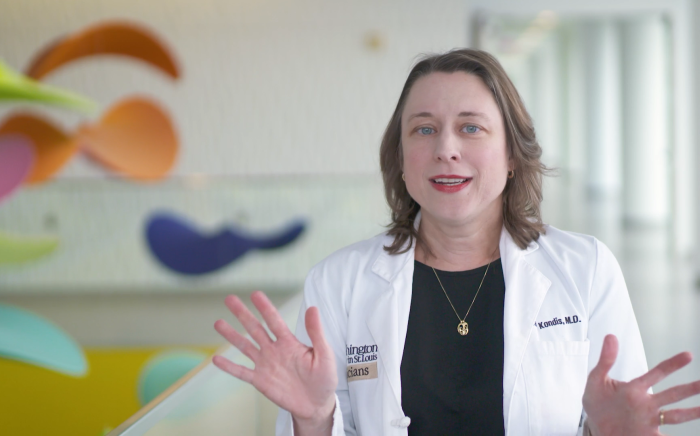What are Branchial Cleft Abnormalities?
A branchial cleft abnormality is a cluster of abnormally formed tissue in the neck. Branchial cleft abnormalities may form:
- Cysts or sinuses. These are pockets full of fluid.
- Fistulas. These are passages that drain to an opening in the skin surface.
Branchial cleft abnormalities are usually found in front of the large muscles on either the side of the neck.
This health problem can cause local infections that keep coming back. This may happen when your child has another infection, like a cold, cough, or sore throat.
Causes
A branchial cleft abnormality is a birth defect. It happens when the area does not form as it should during the early stages of an embryo’s development.
Symptoms
These are the most common symptoms of a branchial cleft abnormality:
- Small lump or mass on one side of the neck that is usually painless
- Small opening in the skin on the side of the neck that drains mucus or fluid
- Redness, warmth, swelling, pain, and drainage if there is an infection
The symptoms of a brachial cleft abnormality can be like other health conditions. Make sure your child sees his or her healthcare provider for a diagnosis.
Diagnosis
This health problem may be seen at birth. Or it may be noticed when your child is older.
To diagnose the problem, your child’s healthcare provider will ask you questions about your child’s health history and current symptoms. He or she will examine your child, paying close attention to his or her neck. A branchial cleft abnormality may not be noticed unless it becomes infected and is painful.
Diagnostic tests may include:
- Ultrasound. Sound waves are used to look at the area.
- CT scan. X-rays and a computer are used to make detailed images of the body. CT scans help to find the exact location of the abnormality and how large it is. Sometimes dye may also be used during the scan to get even more detailed information.
- Biopsy. This is a test in which tissue samples are removed from the body to be looked at under a microscope. This may be done to check for other conditions.
Treatment
Treatment will depend on your child’s symptoms, age, and general health. It will also depend on how severe the condition is.
A branchial cleft abnormality will not go away without treatment. Treatment may include:
- Antibiotic medicine if your child has an infection. In some children, the healthcare provider may need to cut into and drain the area.
- Surgery to remove the tissue. This may be recommended to prevent repeated infections.
Complications
Branchial cleft abnormalities are usually small. But they can get big enough to cause difficulty swallowing and breathing. Repeated infections are common.
Key Points
- A branchial cleft abnormality is a cluster of abnormally formed tissue in the neck.
- A branchial cleft abnormality is a birth defect. It happens when the area does not form as it should during the early stages of an embryo’s development.
- Branchial cleft abnormalities are diagnosed by a physical exam. Diagnostic tests include ultrasound and CT scans.
- Branchial cleft abnormalities are usually small. But they can get big enough to cause difficulty swallowing and breathing. Repeated infections are common.
- Treatment may include antibiotics for infections and surgery to remove the tissue.
Next Steps
Tips to help you get the most from a visit to your child’s healthcare provider:
- Know the reason for the visit and what you want to happen.
- Before your visit, write down questions you want answered.
- At the visit, write down the name of a new diagnosis, and any new medicines, treatments, or tests. Also write down any new instructions your provider gives you for your child.
- Know why a new medicine or treatment is prescribed and how it will help your child. Also know what the side effects are.
- Ask if your child’s condition can be treated in other ways.
- Know why a test or procedure is recommended and what the results could mean.
- Know what to expect if your child does not take the medicine or have the test or procedure.
- If your child has a follow-up appointment, write down the date, time, and purpose for that visit.
- Know how you can contact your child’s provider after office hours. This is important if your child becomes ill and you have questions or need advice.












